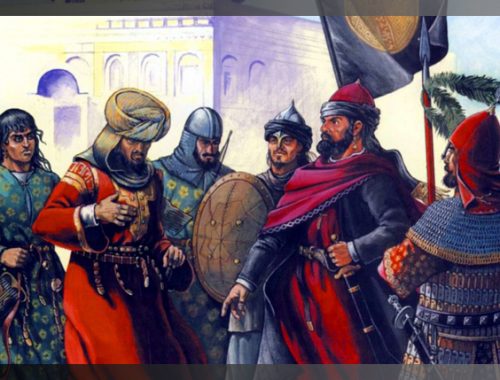
HADITHS AND SUNNA
MEANING AND METHOD OF TRANSMISSION OF HADITHS
The unreliability of hadiths transmitted may be illustrated with a game played among children. Suppose a sentence of ten words is to be transmitted from one ear to the next along a chain of ten students and try to evaluate the result by checking if the initial word spoken in the first ear is exactly the same as the one announced by the tenth in the chain. The transmission of hadiths took place in the course of a space of time of 200 years. And the communication was made over hill and dale by hearsay. Even though we were blindfolded to the reasons for the concoction of hadiths and to assume the chain to have been perfect, and acknowledging the good will of the transmitters, the end results should still be considered doubtful.
A large majority of the public, uninformed of the true state of affairs, believes that the hadiths are the unadulterated sayings of Muhammad as uttered by him. Even the transmitters of hadiths are uncertain of this. A great number of the compilers and Bukhari himself are of the opinion that it is enough to keep the meaning of a transmitted hadith rather than literally committing it to one’s memory. This led to the interpolation of individual opinions into the transmitted sayings of Muhammad; the opinions of those unwilling to confess to themselves their inability to understand them. Given the fact that not every transmitter had an infallible memory capable to implant in his mind all that had been transmitted, he had to rest satisfied with what remained in store, resulting in variant semantic points of view. In spite of this, Bukhari as well as Abu Hanifa and Shafi, heads of the two leading religious sects, have deemed the semantic consideration and hearsay evidence sufficient in their assessment of the true meaning of a hadith.
It is generally accepted by transmitters of the hadiths that the largest congregation the Prophet had addressed in his lifetime was when he delivered his farewell sermon, and it is estimated that more than one hundred thousand people attended it. Yet the sermon, to which more than one hundred thousand people bore testimony, appeared different in written texts according to the reporters; this may demonstrate the production of multiple conflicting interpretations and variants in the hadiths each alleged to have directly originated from the Prophet.
It was said that not the literal rendering of a hadith but its meaning could be transmitted; yet, when there was something omitted in the sentence claimed to have been uttered by the Prophet, the interpretations had been liable to variations. When Aisha, the Prophet’s wife, heard from Abu Hurayra, who had attributed to the Prophet the words: “House, woman and horse may bring bad luck,” she said: “I swear by Almighty God that the Prophet uttered no such thing.” This conviction was widespread during the time of pre-Islamic Arabian paganism but had a different wording: “If there is bad luck, one must look for it in one’s woman, horse or house.” As one can see, this saying attributed to Aisha may be interpreted differently according its wording and context.
All these considerations played a role in the controversies provoked among the transmitters of the hadiths. Many hadiths reported by Muslim were unfounded according to Bukhari and vice-versa. Whereas, among the hadiths transmitted by the founders of the four orthodox religious sects, no distinction was made about their degree of authenticity. The four imams founded their sects disregarding the criteria of the authors of Kutub-ý Sitte (6 renowned hadith books). Of these, Abu Hanifa, the founder of the most prominent of the four sects, blind to his poor knowledge of hadiths, and dodging the hadiths, gave preeminence to his own views for which he was censured by the Imams and was declared an unreliable person by Bukhari.
Turn to the First Page of the Article
PAGE 2: MULTIPLICITY OF HADITHS
PAGE 3: HAD THE HADITHS BEEN A SOURCE OF ISLAM, THE RELIGION WOULD HAVE BEEN INCOMPLETE
PAGE 4: HOW DID THE HADITHS WHOSE COPYING WAS PROHIBITED BY THE PROPHET TAKE THE SHAPE OF BOOKS?
PAGE 5: ARE COMPANIONS OF THE PROPHET FREE FROM ERRORS?
PAGE 7: CHAIN OF TRANSMITTERS OF THE HADITHS
PAGE 8: WE ARE NOT THE FIRST TO ADD WEIGHT TO THESE ARGUMENTS
PAGE 9: REVELATIONS
PAGE 10: SALMAN RUSHDI’S SATANIC VERSES ARE ACTUALLY SATANIC HADITHS
PAGE 11: THE QURAN COMMENTARIES IN THE MARKET
PAGE 12: WHICH HADITH WILL THEY BELIEVE NOW?
PAGE 13: HADITHS ABOUT WHICH THERE IS NO DOUBT AS TO AUTHENTICITY
PAGE 14: OUR AIM IS TO PREVENT PEOPLE FROM DEVIATIONS
You May Also Like

NOT REFORM BUT RETURN TO THE QURAN
3:06 pm
PSEUDO-RELIGION UNDER THE OMAYYADS AND ABBASIDS
10:21 pm

